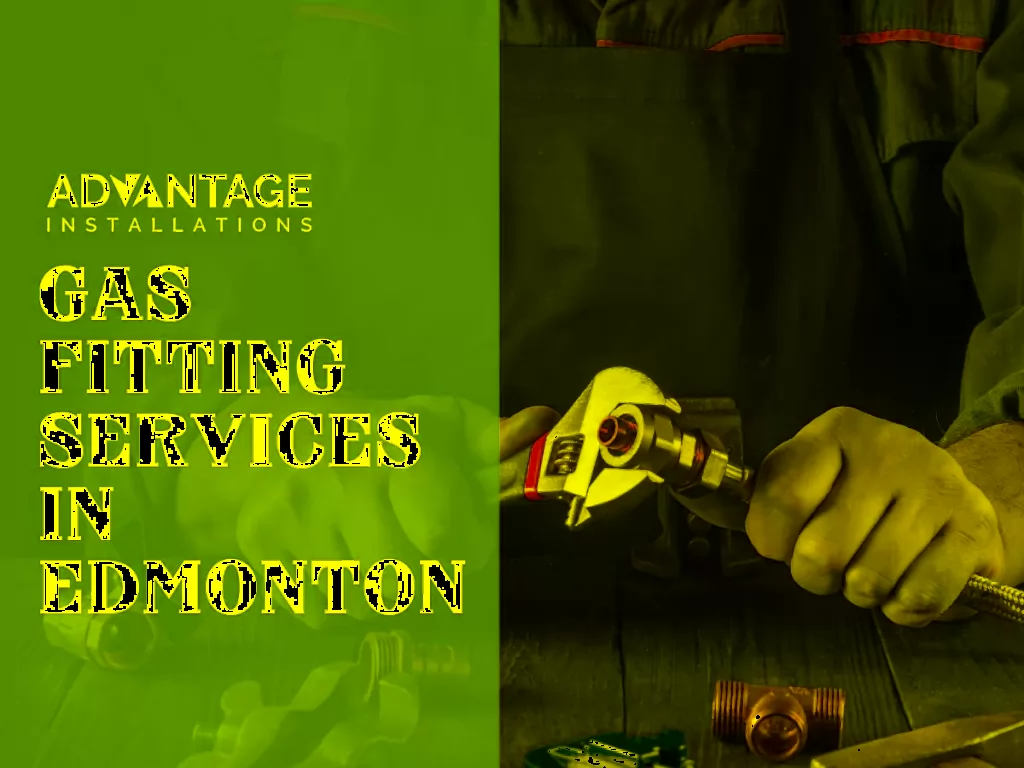Gas Fitting and Heating System Tips for Edmonton Winters

As the winter sets in and the mercury drops in Edmonton, ensuring your home is well-prepared for the cold is a crucial step. In this comprehensive guide, we will examine the vital role of gas fitting and heating system maintenance in winterizing your home. These tips will help you steer the challenges of an Edmonton winter, right from keeping your family warm and safe to maximizing energy efficiency.
Gas Fitting Services for Edmonton
Gas Line Inspections:
The first step in winterizing your home is to have your gas lines inspected by certified gas fitters in Edmonton. They will check your gas pipes to spot early warning signs, which could result in gas leaks at a later stage. They will carry out any repairs which may be necessary, thus ensuring that your gas supply is secure and efficient.
Carbon Monoxide Safety:
Edmonton’s winters mean more indoor heating, which increases the risk of carbon monoxide (CO) exposure. Carbon monoxide cannot be seen, smelt or tasted. This dangerous gas is most commonly caused by faulty cookers, boilers and gas fires.
Some signs of carbon monoxide poisoning are:
yellow flame coming from the gas appliance,
sooty or yellow/brown stains on or around boilers, stoves or fires,
increased condensation on windows, or
an unfamiliar or burning smell when gas or oil appliances are on.
Headaches, dizziness, upset stomach, vomiting, chest pain and confusion are symptoms of carbon monoxide poisoning.
“Colour changing’ or ‘Black spot’ tools are available to detect carbon monoxide. Audible CO detector alarms are also available which can indicate a problem in advance. Carbon monoxide alarms (wall or ceiling mounted) should be fitted in the same room as fuel-burning appliances, such as an open fire, gas cooker or boiler. However, these alarms should not be installed within enclosed spaces, directly above sinks or next to a source of ventilation, such as a window, extractor fan or air vent
Gas Appliance Maintenance:
Gas appliances, such as furnaces and water heaters, are your winter lifelines. Regular maintenance by experienced gas fitters ensures they operate at peak performance, reducing the chances of breakdowns during extreme cold. Ensure that your water heater gets serviced annually in the late summer or early fall so that you can address any potential issues and make sure everything is running smoothly before winter hits.
Gas appliances generally should be safety checked annually and serviced regularly by a Gas Safe Registered Engineer.
Heating System Efficiency
Furnace Maintenance:
It is crucial to take care of furnace maintenance before the winter sets in. Your furnace and heating equipment should be in good shape and prepared to heat your home throughout the winter. Furnaces, heat pumps and boilers should be serviced once per year. A professional maintenance tune-up helps:
• to take care of minor performance flaws that cause inefficient and more expensive operations.
• to protect homeowners from unexpected repairs and heating outages over the winter.
• reverses the damaging effects of wear and tear that ultimately takes your system out of service.
Clean the area around the furnace or heating system regularly. Remove dirt and debris to prevent these particles from getting sucked up into the furnace or air supply during operation. Do not store any items around the furnace – this will ensure airflow to the unit is not blocked.
Cleaning the blower motor and heat exchanger can also help prepare your system for winter use. If you have a gas furnace, you may also want to test the ignitor switch and relight the pilot light.
Check the pipe insulation. Make sure your external pipework is in good condition to protect the pipes from freezing in cold weather. A frozen boiler condensate pipe can stop your boiler working and potentially leave you in the lurch!
Programmable Thermostats:
Heat only the rooms that are in use to save energy and cost. Keep comfortable, but energy efficient temperature setpoints.
a. It is possible to reduce energy consumption by installing a programmable thermostat and turning it down 10-15 degrees for eight hours a day. This would save 10 per cent on your utility bills.
b. When the house is occupied, 68 degrees is usually considered as a comfortable and yet energy efficient temperature.
c. When the house is unoccupied, lower thermostat temperatures ranging from 10 to 15 degrees are ideal to achieve energy savings.
Duct Cleaning:
Clean air ducts are crucial for efficient heating for the following reasons:
- It will protect your health and keep your home will be clean with a continuous flow of fresh air.
- It ensures savings of energy and money.
- It extends the life of your heating / cooling system.
- It can prevent fires.
Energy Efficiency and Winter Comfort
Sealing Drafts:
The Edmonton’s winter chill can creep into home through gaps and drafts. Some of the areas where the cold air can come in are windows, sink piping, basements. Fitting draught seals on the openings of the windows and doors may be the solution. This will not only keep the room warm, it will help to save money on your utility bills. However, the fixed ventilation openings required for flueless and open flued gas heaters must not be blocked. Effective ceiling insulation can also save you up to 20% on your cooling and heating costs.
When the heater is in use, close curtains and blinds to keep the warm air in and reduce heat loss through your windows when there is no winter sunshine.
Window and Door Upgrades:
Making your doors and windows more energy efficient will reduce your energy bills and lower your carbon footprint.
Energy efficient glazing covers both double and triple glazing. These are windows with two or more glass panes in a sealed unit. This limits heat loss through windows, thus there are fewer draughts making the room comfortable. The other benefits are insulation of your home against external noise and reduced condensation build up on the insides of the windows. You can also improve the energy efficiency of your home by using heavy curtains.
Regular Filter Changes:
Changing furnace filters is a simple yet crucial step in maintaining indoor air quality and ensuring your heating system runs efficiently throughout the winter.
Depending upon the type of filter used, air filters need to be replaced regularly, which can be anywhere from monthly to every 12 months. This is because air filters protect the HVAC systems from dirt, dust, and debris which may cause inefficient performance and damage to delicate internal components.
When filters of the furnace or heat pump becomes dirty, the contaminants pass through into the furnace or air handler, where they can settle and accumulate on components, hampering their efficiency and causing damage. It does not allow proper airflow through the furnace or air handler, as a result the system consumes more energy as it works harder to move air. This can also cause equipment to overheat, leaving you without heat when the system shuts down for safety, and potentially damaging components which requires repair.
During the winter, due to the heavy load on the heating systems, the air filters fill up faster and require more frequent replacement. It is advisable to check the condition of the filter on a monthly basis.
Miscellaneous:
A few other tips to generate savings on your utility bills are enumerated below:
- Install a door sweep in case there is a gap between the bottom of the exterior door and the floor.
- Gadgets like chargers, computers, tablets should be turned off at their power points when not in use.
- Running your ceiling fan in a clockwise direction will push the warm air that has risen to the ceiling back down into the room.
- Open your blinds on sunny days to take advantage of the heat from the sun. When the sun sets, close the curtains. This will trap the heat inside and add an extra layer of insulation to your windows.
Conclusion
The Edmonton’s winters can seem very daunting, but with the right preparation, you can make your home a warm and welcoming haven during the coldest months. Gas fitting professionals play a vital role in ensuring the safety of your gas lines and appliances, while heating system maintenance and energy-efficient upgrades contribute to both comfort and cost savings. By following the steps mentioned above, you can confidently winterize your home and face Edmonton’s winter with warmth and peace of mind.

